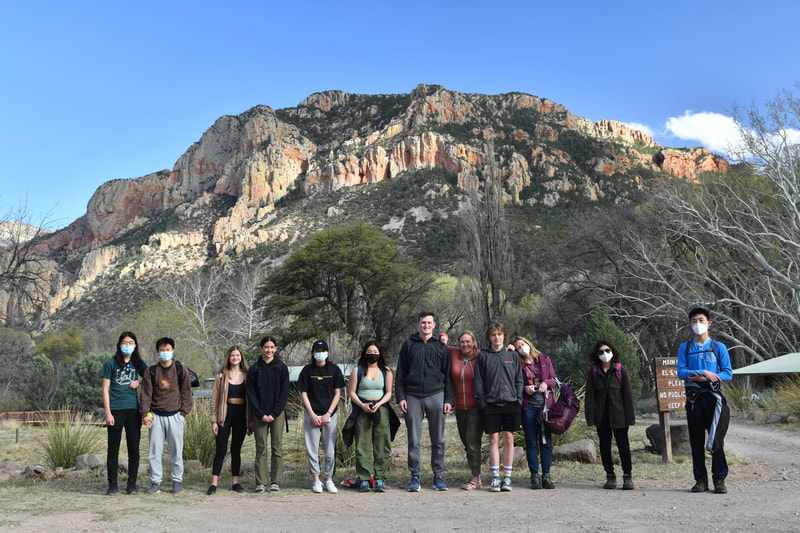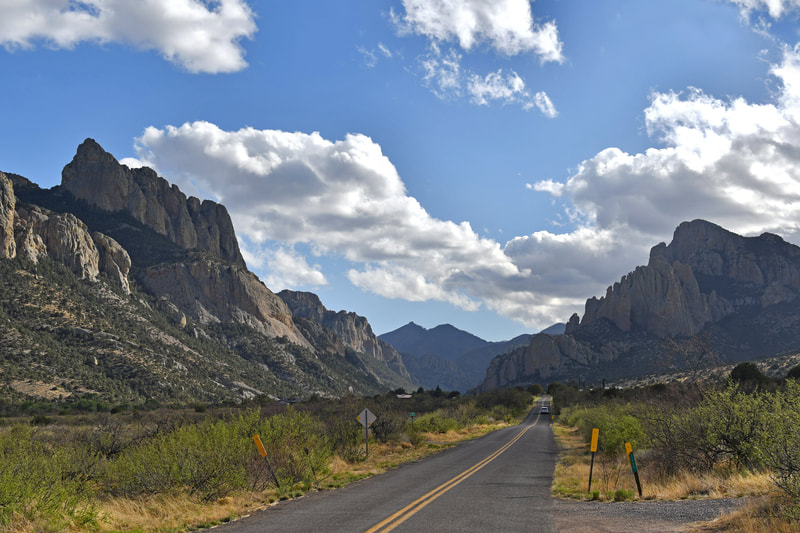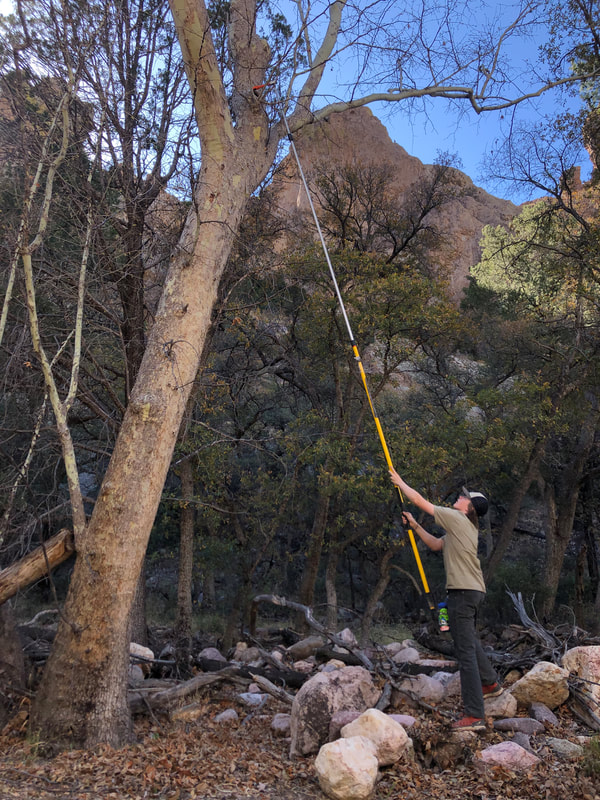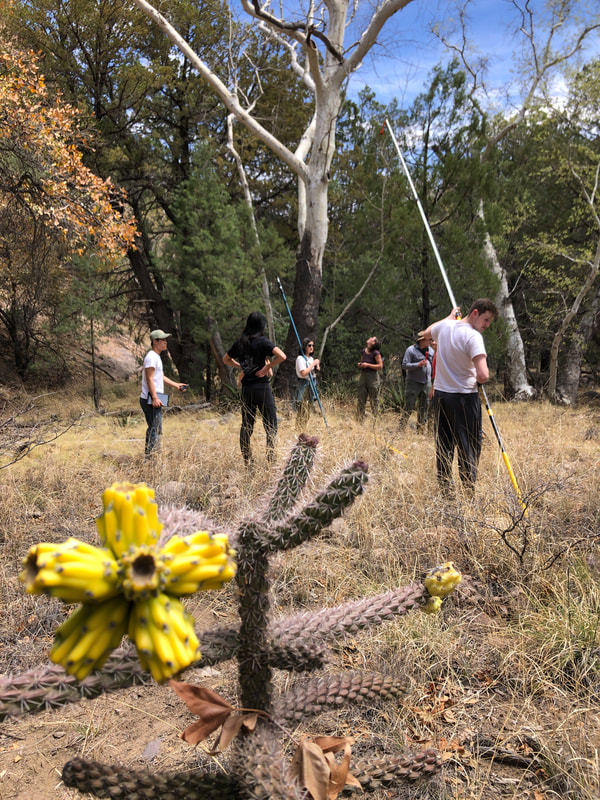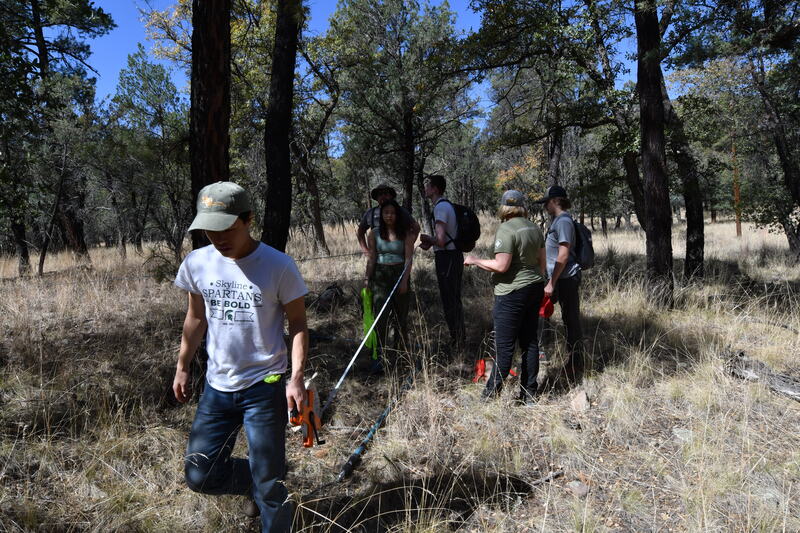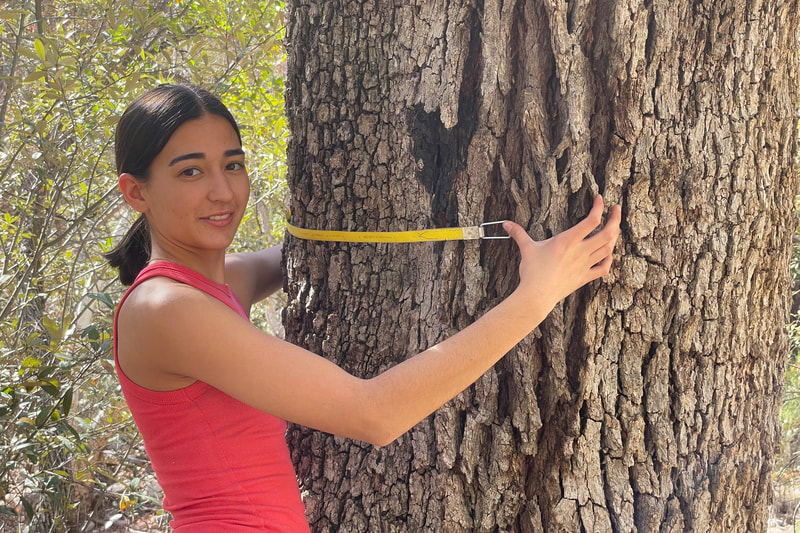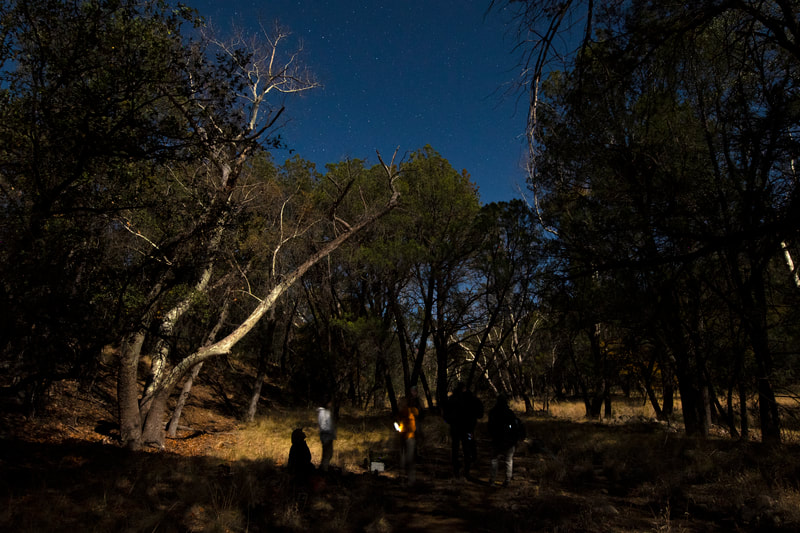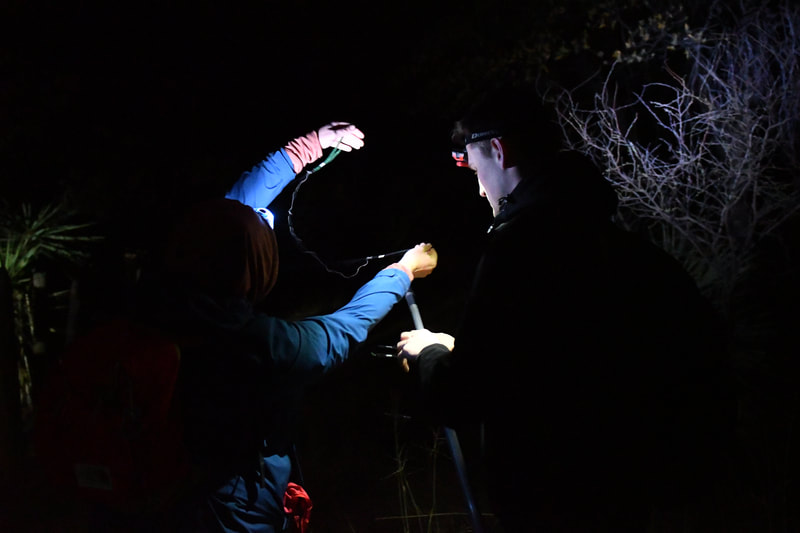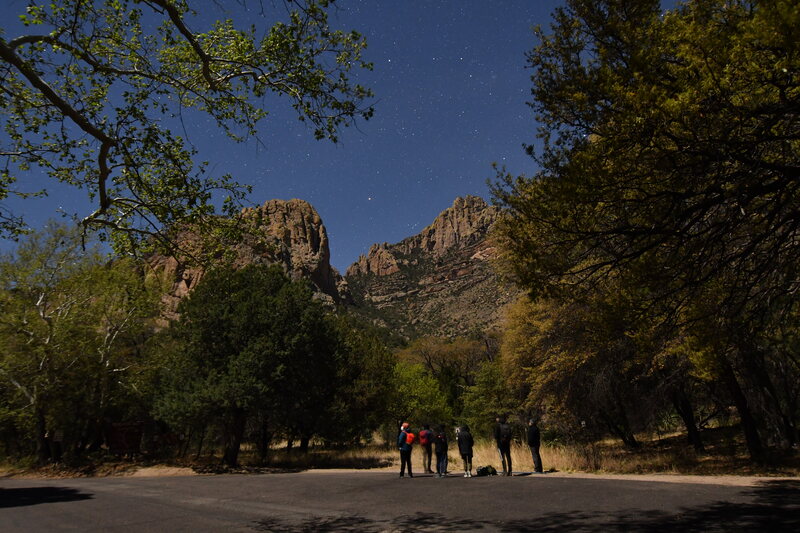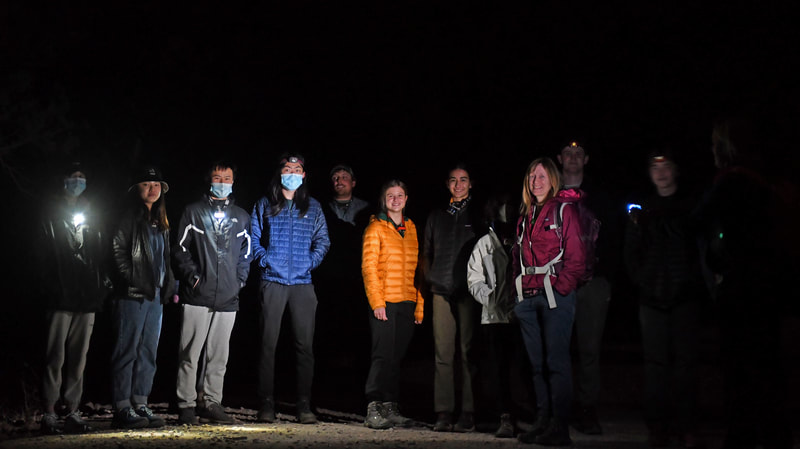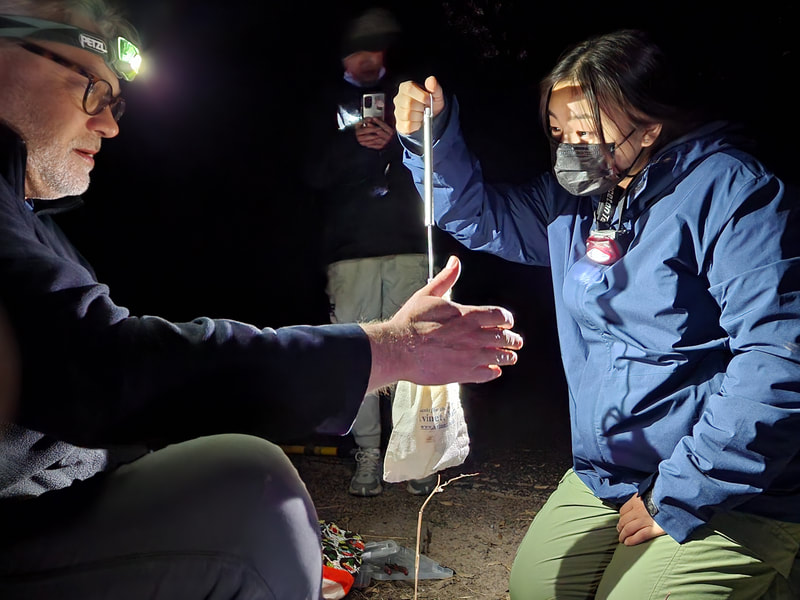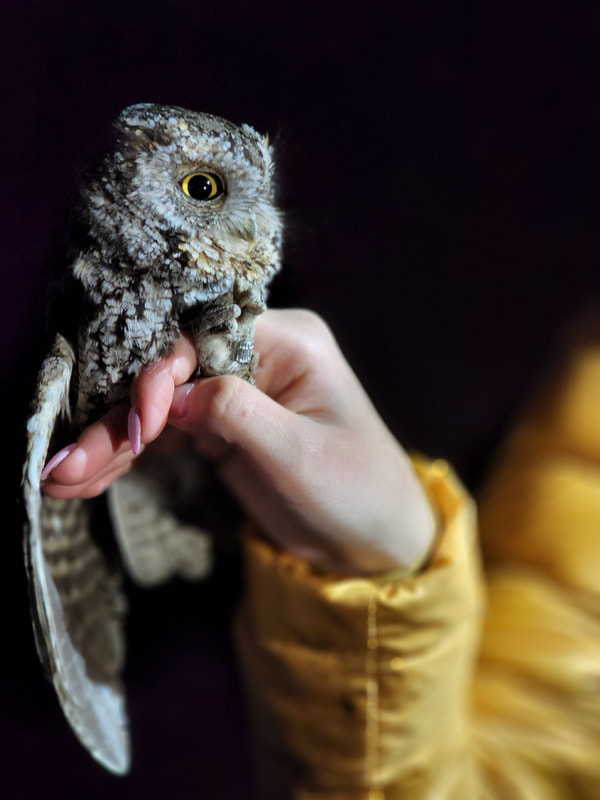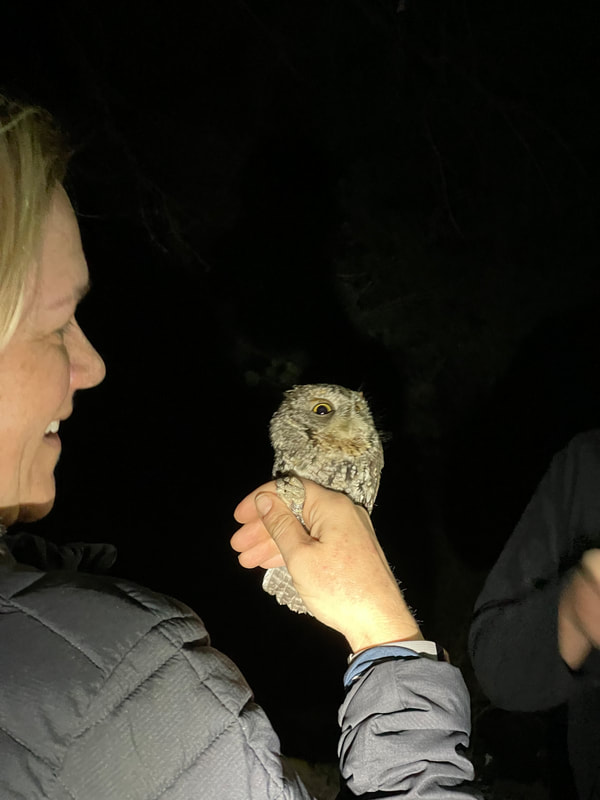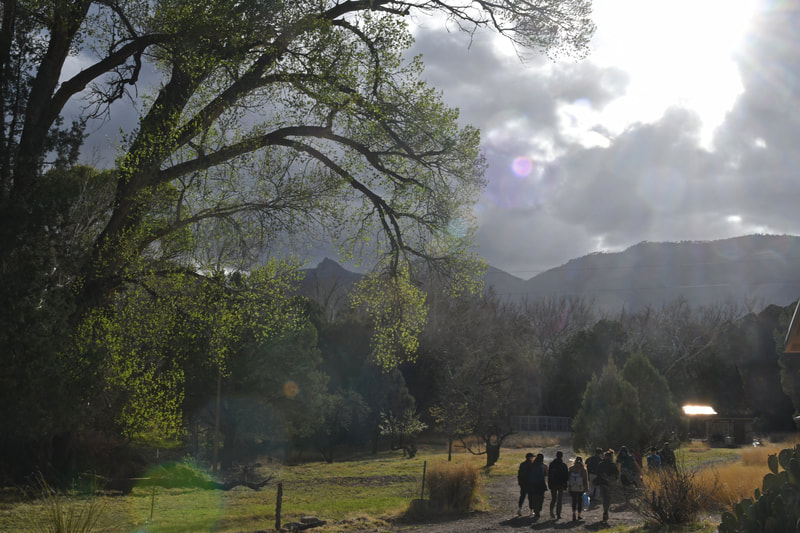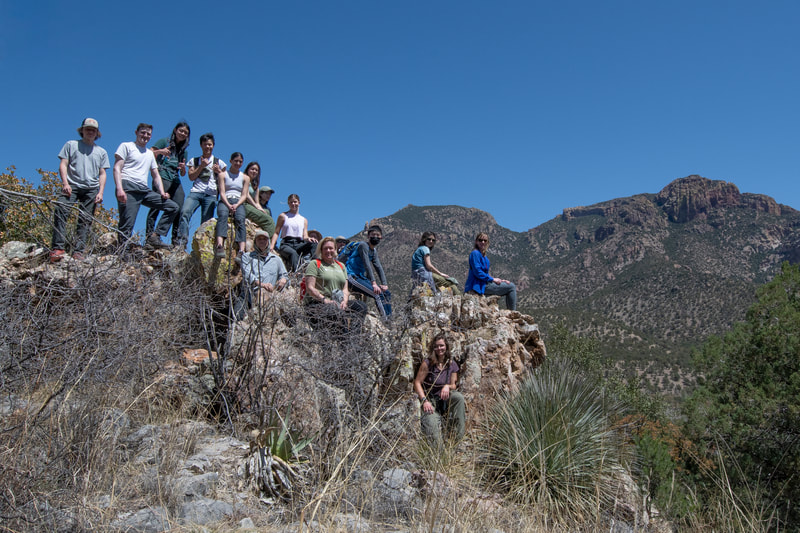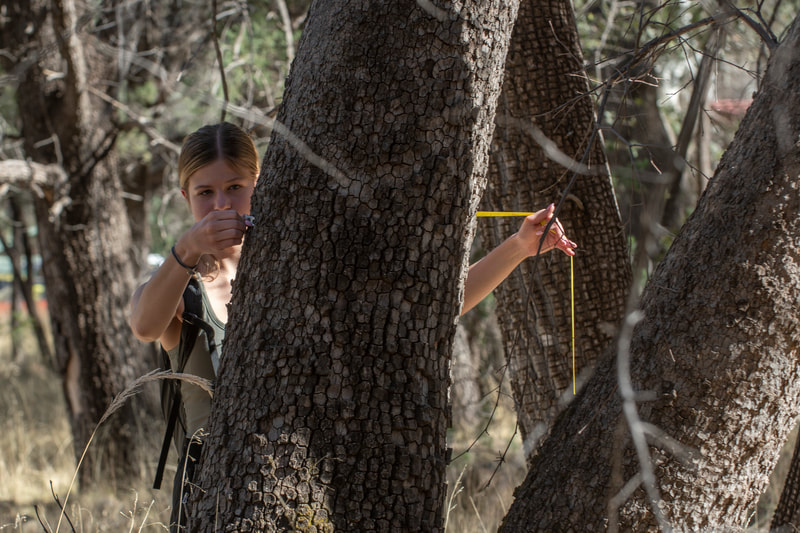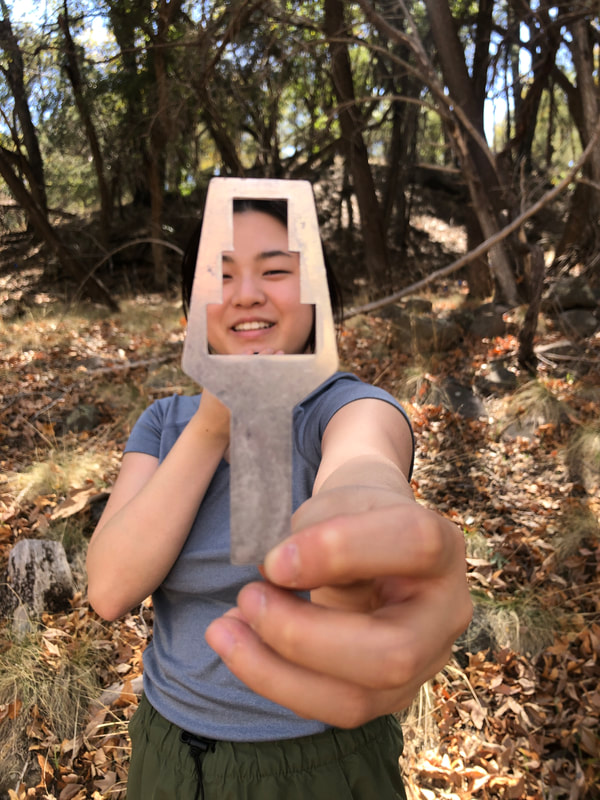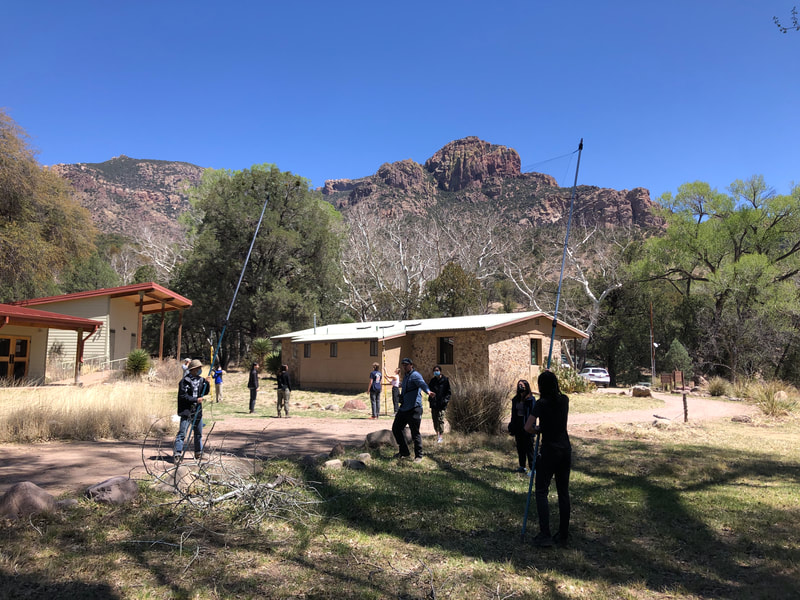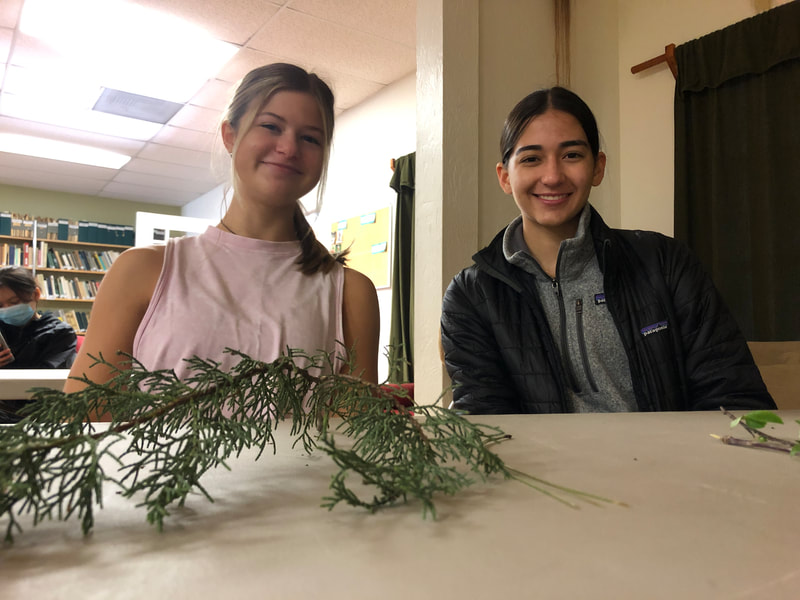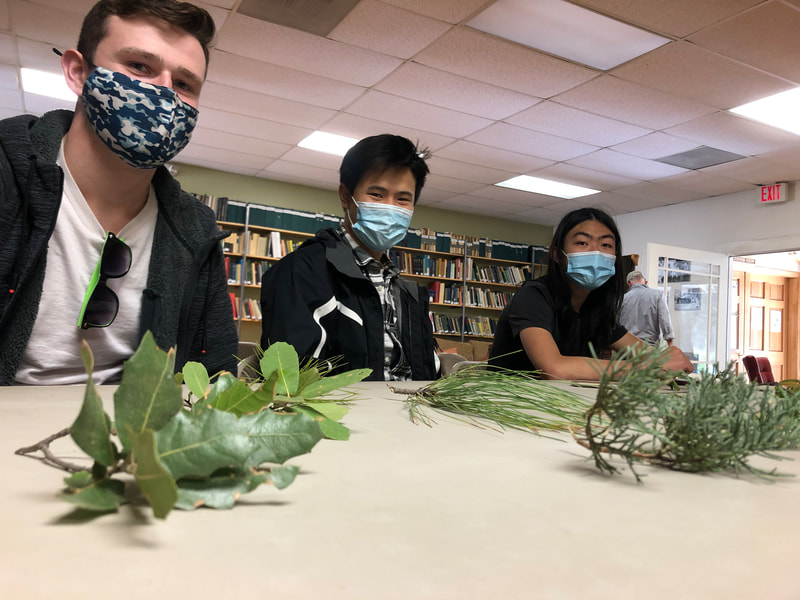Following Forest Owls (2022)
|
For our 11th student expedition, we visited the Chiricahua Mountains of southeastern Arizona! We assisted Dr. Dave Oleyar of Hawkwatch International on an owl ecology study. We learned about nesting and breeding behaviors, and investigated potential impacts climate change could have on owls and other wildlife. During the day, we measured owl habitat—locating tree cavities and taking GPS and other measurements. At night, we listened for the low-pitched ‘boop’ of the Flammulated Owl, the high-pitched laughing of Elf Owls, or the non-stop ‘reverse signal’ tooting of the Northern Saw-whet owl while we surveyed for, attempted to mist-net capture, and band owls.
|
Here are some highlights of the trip:
- Captured a Whiskered Screech Owl.
- Learned how to recognize different owl species by their call.
- Experienced the frustration of multiple near-misses, with owls bouncing off, flying under and flying through our mist nets.
- Learned how to identify many tree species.
- Got really good at finding cavities in trees.
- Worked with scientists on proper protocol for collecting data.
- Observed wildlife such as the horned lizard in their natural habitats.
- Hiked to a rocky outcropping that had marine fossils.
- Ate amazing food.
- Stayed in an isolated research station and met other visiting scientists.
- Painted a favorite scene with water colors.
- Daily reflections about our experience in Arizona.
